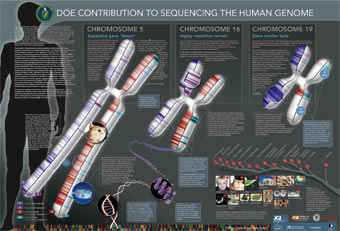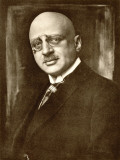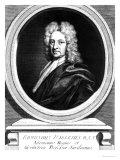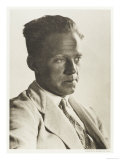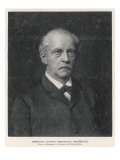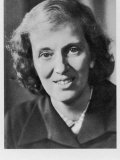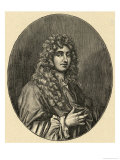|
|
|
|
|
|
|
|
|
|
|
|
SCIENCE:
PHYSICS & CHEMISTRY
|
|
|
|
|
|
|
|
|
|
|
|
|
|
|
|
|
|
|
 |
|
|
|
|
|
|
Fritz Haber
b. 12-9-1868; Breslau, Germany
d. 1-29-1934; Basel, Switzerland
Fritz Haber received the 1918 Nobel Prize in Chemistry “for the synthesis of ammonia from its elements.” Haber, called the “father of chemical warfare” felt no conflict over his role in developing and deploying chlorine and other poisonous gases during World War I.
His wife, Clara Immerwahr (1870-1915), the first woman to receive a Ph.D. in chemistry from the University of Breslau, opposed his work and committed suicide, as did their only child, Herman, in 1946.
Haber should also be remembered for his role in the process of synthesizing nitrogen from thin air. Nitrogen is a key component in NPK, the wonder fertilizer of industrial agriculture (NPK are markers of nitrogen, phosphorus and potassium on the periodic table - but you knew that! - you're into chemistry, right?).
Why should you be worried abour NPK? Have you heard about Peak Oil? - we're running out of fossil fuels - and out of phosphorus and potassium. - These elements can't be “made”, so lack of synthetic fertilizer is going stress the growing of food in a world of seven + billion people. More info - Are We Heading Toward Peak Fertilizer?
Clara Immerwahr quote ~
• “It has always been my attitude that a life has only been worth living if one has made full use of all one's abilities and tried to live out every kind of experience human life has to offer. It was under that impulse, among other things, that I decided to get married at that time... The life I got from it was very brief...and the main reasons for that was Fritz's oppressive way of putting himself first in our home and marriage, so that a less ruthlessly self-assertive personality was simply destroyed.”
|
|
|
|
Otto Hahn
b. 3-8-1879; Frankfurt, Germany
d. 7-28-1968; Göttingen
Otto Hahn pioneered in the fields of radioactivity and radiochemistry and is regarded as “the father of nuclear chemistry” and the “founder of the atomic age”. He was awarded the 1944 Nobel Prize in Chemistry “for his discovery of the fission of heavy atomic nuclei”; the award is controversial because the Nobel Committee did not include his colleague Lise Meitner.
|
|
|
|
Sir Edmond Halley
b. 11-8-1656; London, England
d. 1-14-1742; Greenwich, London
Sir Edmond Halley was an astronomer, geophysicist, mathematician, meteorologist, and physicist. He is most noted for his prediction of the return of a comet in 1758, officially known as 1P/Halley, the most famous of the periodic comets (due to brightness and 75-76 year periodicity which was within the range of a human life span).
Halley's mathematical work also contributed to actuarial science and history of demography.
Edmund Halley quotes ~
• “In the year 1456 ... a Comet was seen passing Retrograde between the Earth and the sun... Hence I dare venture to foretell, that it will return again in the year 1758.”
• “This sight... is by far the noblest astronomy affords.”
• “Aristotle's opinion... that comets were nothing else than sublunary vapors or airy meteors... prevailed so far amongst the Greeks, that this sublimest part of astronomy lay altogether neglected; since none could think it worthwhile to observe, and to give an account of the wandering and uncertain paths of vapours floating in the Ether.”
• “I earnestly wish them all imaginable success; in the first place that they may not, by the unseasonable obscurity of a cloudy sky, be deprived of this most desirable sight; and then, that having ascertained with more exactness the magnitudes of the planetary orbits, it may redound to their eternal fame and glory.”
• “Scarce any problem will appear more hard and difficult, than that of determining the distance of the Sun from the Earth very near the truth: but even this... will without much labour be effected.”
• Edmond Halley: Charting the Heavens and the Seas
• Mark Twain posters
|
|
|
|
Nicolaas Hartsoeker
b. 3-26-1656; Gouda, Netherlands
d. 12-10-1725; Utrecht
Mathematician and physicist Nicolaas Hartsoeker invented the screw-barrel simple microscope circa 1694. He was an assistant to Huygens, and eventually was so famous in his time that Czar Peter the Great financed an observatory for him in Amsterdam.
The popular, but untrue story, is that while observing human sperm through a microscope, Hartsoeker said he saw tiny men inside the sperm. He postulated their existence which he called homunculi or animalcules.
• The Microscope in the Dutch Republic: The Shaping of Discovery
|
|
|
|
Stephen Hawking
b. 1-8-1942; Oxford, England
Stephen Hawking is known for his contributions to the fields of cosmology, quantum gravity and black holes. His book, A Brief History of Time, stayed on the British Sunday Times bestsellers list for a record-breaking 237 weeks. Hawking is almost completely paralyzed by a neuro muscular-dystrophy.
|
|
|
|
Werner Heisenberg
b. 12-5-1901; Wurzburg, Germany
d. 2-1-1976; Munich
Werner Heisenberg was one of the founders of quantum mechanics, best known for his Heisenberg uncertainty principle stating that “the simultaneous determination of two paired quantities, for example the position and momentum of a particle, has an unavoidable uncertainty”.
Heisenberg was awarded the Nobel Prize in Physics, 1932 “for the creation of quantum mechanics, the application of which has, inter alia, led to the discovery of the allotropic forms of hydrogen”.
• Physics and Philosophy: The Revolution in Modern Science
|
|
|
|
Hermann von Helmholtz
b. 8-31-1821; Potsdam, Kingdom of Prussia, Germany
d. 9-8-1894
Physician and physicist Hermann von Helmholtz made significant contributions to several widely varied areas of modern science.
Physiology and psychology: mathematics of the eye, theories of vision, ideas on the visual perception of space, color vision research, and on the sensation of tone, perception of sound, and empiricism.
Physics: theories on the conservation of energy, work in electrodynamics, chemical thermodynamics, and on a mechanical foundation of thermodynamics.
Philosopher: philosophy of science, ideas on the relation between the laws of perception and the laws of nature, the science of aesthetics, and ideas on the civilizing power of science.
One of his notable students was Heinrich Rudolf Hertz.
Hermann von Helmholtz quote ~
• “Whoever in the pursuit of science, seeks after immediate practical utility may rest assured that he seeks in vain.” Academic Discourse (Heidelberg 1862)
• Science and Culture: Popular and Philosophical Essays
|
|
|
|
|
|
|
Heinrich Hertz
b. 2-22-1857; Hamburg, Germany
d. 1-1-1894; Bonn
Physicist Heinrich Hertz “clarified and expanded the electromagnetic theory of light that had been put forth by Maxwell, ... and was the first to satisfactorily demonstrate the existence of electromagnetic waves by building an apparatus to produce and detect VHF or UHF radio waves.”
The SI unit hertz (Hz) was established in his honor in 1930 for frequency, a measurement of the number of times that a repeated event occurs per second.
He was a student of Hermann von Helmholtz.
|
|
|
|
Dorothy Crowfoot Hodgkin
b. 5-12-1910; Cairo, Egypt
d. 7-29-1994
Dorothy Crowfoot Hodgkin, winner of the 1964 Nobel Prize in Chemistry, is regarded as one of the foremost scientists in the field of X-Ray crystallography studies of natural molecules.
• Women in Science composite poster
|
|
|
|
Albert Hofmann
b. 1-11-1906; Baden, Switzerland
d. 4-29-2008; Burg im Leimental, Switzerland
Albert Hofmann was a chemist and experimental psychologist best known for having been the first to synthesize, ingest and learn of the psychedelic effects of lysergic acid diethylamide (LSD).
Albert Hofmann quotes ~
• “Through my LSD experience and my new picture of reality, I became aware of the wonder of creation, the magnificence of nature and of the animal and plant kingdom. I became very sensitive to what will happen to all this and all of us.”
• “Before LSD got onto the streets (in the 1960s), we were able to gather a lot of therapeutic experiences. The substance was used in the psychoanalysis of patients who couldn't be talked to.”
• “I knew immediately that this drug would have importance for psychiatry but, at that time, I would never have believed that this substance could be used in the drug scene, just for pleasure. For me it was a deep and mystical experience and not just an everyday pleasurable one. I never had the idea that it could be used as a pleasure drug.”
|
|
|
|
Christiaan Huygens
b. 4-14-1629; The Hague, The Netherlands
d. 7-8-1695
Christiaan Huygens was a Dutch astronomer, physicist and mathematician. Noted as instrumental in the “scientific revolution”, Huygens discovered Saturn's moon Titan, observed Saturn's rings were made up of rocks, wrote a book on probability theory encouraged by Pascal and made significant contributions to timekeeping. Huygen's contributions to space exploration is commemorated in the Cassini-Huygens Saturn & Titan probe.
|
|
|
previous page | top | next
Famous Chemist & Physicists List | a | b | c | d-e | f | g | H | i-j-k | l | m | n-o | p | q-r | s | t | u-z
|
|
I have searched the web for visual, text, and manipulative curriculum support materials - teaching posters, art prints, maps, charts, calendars, books and educational toys featuring famous people, places and events - to help teachers optimize their valuable time and budget.
Browsing the subject areas at NetPosterWorks.com is a learning experience where educators can plan context rich environments while comparing prices, special discounts, framing options and shipping from educational resources.
Thank you for starting your search for inspirational, motivational, and educational posters and learning materials at NetPosterWorks.com. If you need help please contact us.
|
|
|


